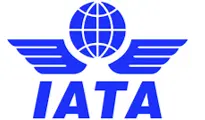
The function of a GDS has always been to efficiently aggregate content from a variety of sources, applying additional sophistication from a retailing perspective to be able to ensure that we are getting the right offer at the right time to the right customer. The adoption of NDC enables us to do this more effectively than ever.
Kathy Morgan
Senior Vice President of Distribution Experience Product Management at Sabre
What does NDC stand for in travel, and what exactly is it?
IATA NDC refers to New Distribution Capability, an initiative championed by The International Air Transport Association. NDC in travel is an XML-based data transmission standard that modernizes the way travel suppliers, sellers and buyers communicate with each other to conduct business. This standard supports the distribution of dynamic and personalized offers, which may include base fares, ancillary content, photos and other types of rich media, through indirect distribution channels, such as the Sabre marketplace.
As a result, third-party sellers gain access to innovative content bundles that historically have only been accessible through airlines’ direct sales channels, such as their websites. Airlines are eager to expand their distribution reach consistently across channels. NDC supports these objectives. That’s the way the industry talks about it – but what does this language actually mean? Essentially, it means that as an ecosystem, we have the opportunity to better retail airline products and services so that we all have an enhanced experience–just like we do in our private consumer lives.
Why does NDC get so much attention?
Marketplace dynamics fuel the need for new retailing and distribution capabilities, such as:
Airlines want to grow their top and bottom lines by creating and distributing differentiated content consistently across direct and indirect channels
Travel Retailers (e.g., leisure agencies, OTAs, OBTs and TMCs) want to maximize access to innovative content while maintaining operational efficiency
Corporations want to strike a balance between duty of care, costs, policy compliance and traveler experience
Assuming that business travel will be under greater scrutiny in the coming years, corporate travel buyers will be eager to demonstrate how their travel programs maximize value in helping their organizations achieve their objectives. IATA created a set of NDC technical standards to guide development over the past decade. During that time, leading airlines have invested a lot of resources to bring NDC to life. The airlines’ activity has caused other organizations to pay attention and act, as well.
The potential for “NDC pipes” to transmit innovative, higher-margin content, is a compelling objective for the travel industry overall. Ultimately, it’s not what the industry is trying to achieve – that is, more personalized travel retailing – but rather how the industry gets there, that has caused substantial debate.
Business travelers’ expectations are changing. They are hungry for more tailored information about travel policies, and they want reassurance that their employers and TMCs are available to offer 24×7 support as plans change.
Common Misconceptions about NDC:
NDC is not a product, platform or retailing strategy.
Rather, it is a set of technical capabilities that can augment and enhance product offerings and support consistent distribution of rich content (media, images, descriptions, etc.) across distribution channels.
NDC itself does not create personalized content.
Instead, it enables distribution of dynamic offers through third-party sellers (e.g., travel agencies, online booking tools and OTAs) in a way that is consistent with the flexibility and control historically associated with airlines’ direct sales channels.
NDC allows the airline to have an interactive conversation with the shopper – a live dialogue. This allows airlines to better understand both the customers’ expressed and inferred needs.
Xavier Lagardere
Head of Distribution | Lufthansa Group
NDC is not a commercial strategy.
NDC is a technology standard. While some airlines are using the deployment of NDC content as a means to introduce new commercial terms, NDC itself does not imply a particular commercial model. Why is NDC important?
Using NDC to enhance the customer experience
NDC shifts airline distribution from being a relatively static process involving filed information to a more dynamic and personalized operating model involving offers, orders and real-time data insights.
Based on how much information a traveler is willing to provide, airlines can respond to shopping requests with results that are finely tuned to an individual’s preferences and reason for travel. By analyzing traveler profile information, historical buying behaviors and real-time market data, airlines can bundle other products and services into an offer along with airfares. For example, if a traveler purchased Wi-Fi and an extra legroom seat on their last two flights, an airline could reference that data and present an offer that includes those elements the next time that person searched for flights.






